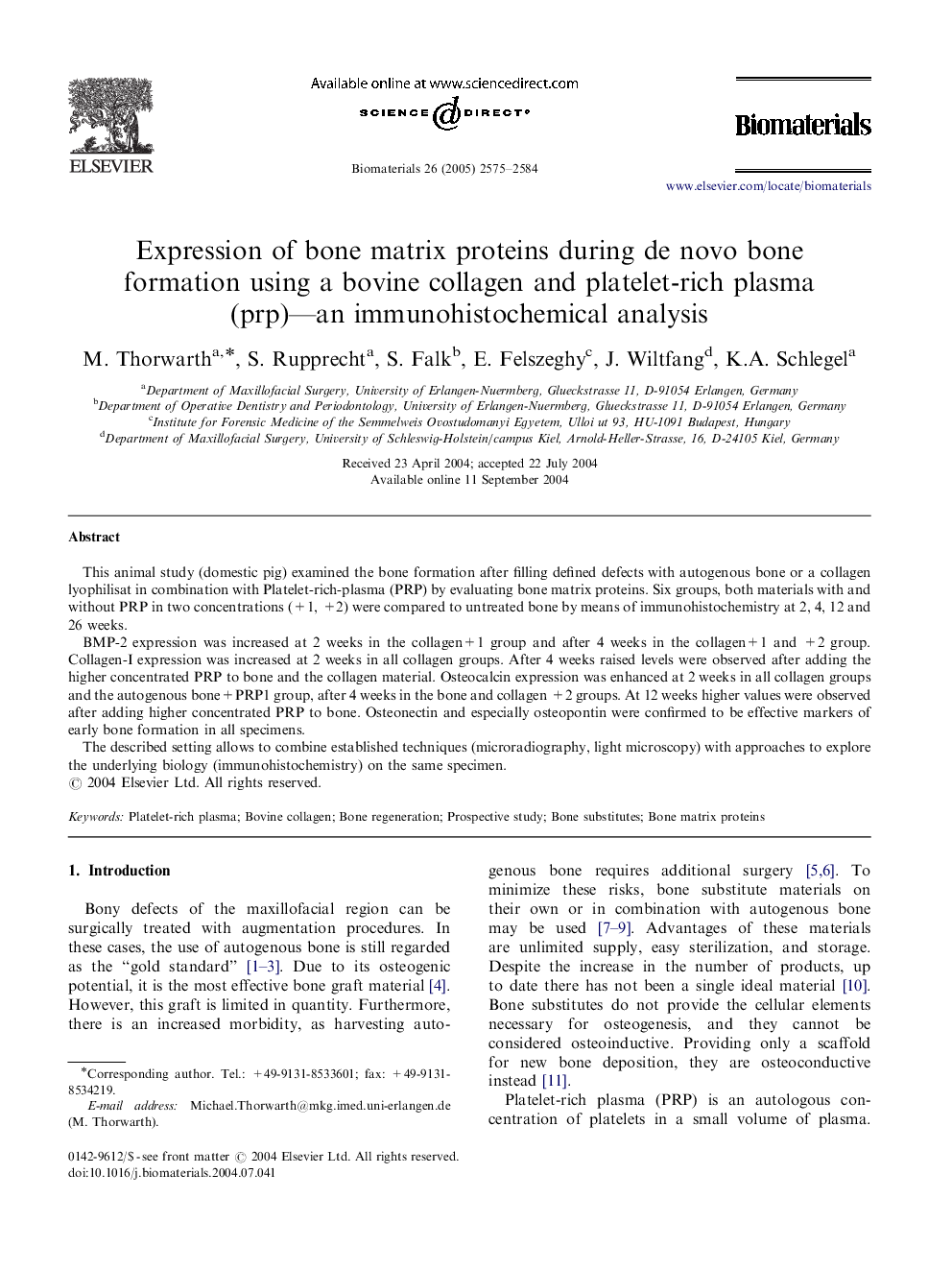| Article ID | Journal | Published Year | Pages | File Type |
|---|---|---|---|---|
| 12824 | Biomaterials | 2005 | 10 Pages |
This animal study (domestic pig) examined the bone formation after filling defined defects with autogenous bone or a collagen lyophilisat in combination with Platelet-rich-plasma (PRP) by evaluating bone matrix proteins. Six groups, both materials with and without PRP in two concentrations (+1, +2) were compared to untreated bone by means of immunohistochemistry at 2, 4, 12 and 26 weeks.BMP-2 expression was increased at 2 weeks in the collagen+1 group and after 4 weeks in the collagen+1 and +2 group. Collagen-I expression was increased at 2 weeks in all collagen groups. After 4 weeks raised levels were observed after adding the higher concentrated PRP to bone and the collagen material. Osteocalcin expression was enhanced at 2 weeks in all collagen groups and the autogenous bone+PRP1 group, after 4 weeks in the bone and collagen +2 groups. At 12 weeks higher values were observed after adding higher concentrated PRP to bone. Osteonectin and especially osteopontin were confirmed to be effective markers of early bone formation in all specimens.The described setting allows to combine established techniques (microradiography, light microscopy) with approaches to explore the underlying biology (immunohistochemistry) on the same specimen.
